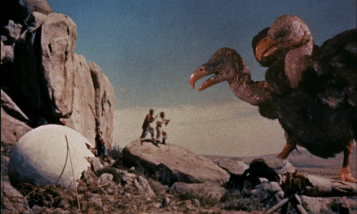
 This post is brought to you by the Swords of Fire series with #4 due out this fall. (Those who subscribed to the newsletter have already seen the new cover!) These collections offers longer heroic fantasy with four novellas, each with an illustration by the cover artist, M. D. Jackson. Working in the Lin Carter tradition of the 1970s, these books offer exciting tales of monsters and magic with enough length to tell their tales with some world-building and characterization. Certain stories are singular but others offer the same characters in each volume, such as Jack Mackenzie’s Ka Sirtago & Poet.
This post is brought to you by the Swords of Fire series with #4 due out this fall. (Those who subscribed to the newsletter have already seen the new cover!) These collections offers longer heroic fantasy with four novellas, each with an illustration by the cover artist, M. D. Jackson. Working in the Lin Carter tradition of the 1970s, these books offer exciting tales of monsters and magic with enough length to tell their tales with some world-building and characterization. Certain stories are singular but others offer the same characters in each volume, such as Jack Mackenzie’s Ka Sirtago & Poet.
Sinbad, as a character of adventure, dates back to The Arabian Nights (or One Thousand and One Nights) that collection of Persian and Arabian folktales from the Middle Ages. In that cycle of stories, Sinbad goes on seven voyages and meets such monsters as the giant Roc and the man-eating giant. Like the hero Ulysses, he faces these terrors with bravery and cunning. What better material for comic books?

In our previous look at American Sinbad comics we mentioned these (beginning in 1958), along with Joe Kubert’s earlier “Son of Sinbad” (from 1950). There were also some recent Sinbad tales here. But even earlier than these comics, the UK comic, Sun, had two Sinbad comics worthy of mention, presented two pages at a time like most British comics. The first was “Sinbad the Sailor” (September 27 to December 13, 1947) based on the Douglas Fairbanks film. It appeared in Knockout but was reprinted in Sun in 1952. The author is not listed but follows the film script and even includes photos in some frames. Michael Hubbard was the artist. Because of being a film comic, there are no monsters, mostly talking heads. A boring start for what will be exciting comics.

Far more interesting is “Sinbad Sails Again” from Sun, March 29 to July 26, 1952. The author is unknown but the artists were Stephen Chapman and Michael Hubbard. This time Sinbad meets monster after monster and the Chapman-Hubbard art is great.



Not all episodes had monsters in them. There is a few issues with Sinbad dealing with evil humans too, in particular, the Caliph’s vizier and the Chief of Assassins.






Of course, it can’t all be monsters. Sinbad has to rescue a beautiful woman, Princess Shireen, the Caliph’s daughter.




In the end, the Caliph knows that Sinbad has done him a great service, and he might make a good son-in-law…
Conclusion

Now this is a comic strip worthy of Ray Harryhausen! You can almost see the animated creatures that Ray could have done for it. Of course, the first Harryhausen Sinbad movie was still six years away but those dinosaurs could not be anything but descendants of King Kong or The Lost World. Perhaps not too true to The Thousand and One Nights but no Sinbad fan anywhere is going to complain. Dinosaurs, elephants, pterodactyls, sea serpents and, of course, the roc!
Sinbad as a comic book character comes out of the movies, not literature. And those films would also have a strong effect on Sword & Sorcery. Even Robert E. Howard was a fan of The Thief of Baghdad with Douglas Fairbanks in 1924. What would he have thought of Harryhausen in the decade between 1958 and 1981? He would have loved them. Comics such as “Sinbad Sails Again” could only have helped in the imagining of what might be done on screen. It’s an important link in the world of S&S comics.
Sword & Sorcery from RAGE machine Books




